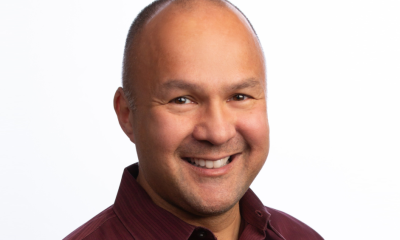Interviews
Nick Romano, Co-Founder & CEO of Deeplite – Interview Series

Nick Romano is the Co-Founder & CEO of Deeplite an AI-Driven Optimization solution to make Deep Neural Networks faster, smaller and energy-efficient from cloud to edge computing.
Nick is a serial entrepreneur & accomplished CEO delivering successful outcomes for over 20 years. Recently he cofounded & scaled an enterprise SaaS platform with multi-million-dollar recurring revenues & over 100 employees. He has been honored by McMaster University Engineering as a Top 150 Alumni.
What initially attracted you to AI?
I’ve been in the technology space for over 25 years and have seen many cycles and trends, some hype and some real. AI is a dynamic and growing field, and what I love about it is how the technology can genuinely be used in so many different ways to improve how people live and work. I wanted to be part of this movement. However, there are challenges to taking AI to real-world environments. It takes a lot of computing capacity and energy to make AI work properly – it’s computationally intensive. That is fine in a lab, but if it’s too big or too slow or takes up too much power, it’s hard to bring AI to real-world scenarios. That’s our mission and the real attraction for me – enabling AI for everyday life.
Could you share the genesis story behind Deeplite?
The idea for Deeplite started in the TandemLaunch incubator in Montreal. Davis Sawyer, who is now our chief product officer and an AI domain expert, and Ehsan Saboori, who is now our CTO and is really the brains behind our IP, started developing the technology there. I joined up with them in 2019, bringing my many years of technology leadership and scaling companies to the table, and we officially launched Deeplite as a company in mid 2019. Now we have over 20 employees with offices in Montreal and Toronto, and we announced a $6 million Series Seed in April 2021.
Why is embedding AI processing directly in hardware versus the cloud so important in certain use cases such as autonomous vehicles and drones?
There are many reasons why you want to run your inference, the AI decisioning process, at the point of data capture vs. the cloud. Probably the biggest reason in mission critical applications like autonomous vehicles is what’s called latency, which basically means how long does the AI take to make a decision. If you need to capture the data, send it to the cloud for inference, then return the results back, that is obviously going to take much longer than doing it locally in real time. In autonomous driving, milliseconds matter big time.
Other reasons include privacy, keeping sensitive data local vs. sending to the cloud and, of course, connectivity which in its absence renders cloud inference moot. The complex deep neutral networks that drive AI require a lot of compute power to run, they use a lot of memory, and they consume a lot of power, so AI solutions were forced to use the cloud. So, in order to get out of the cloud and make AI run locally at the edge in a vehicle or a drone for example, you need to find a way to reduce the overall size and power profile of the model, allowing it to run directly on the hardware – the device – with far fewer resources. It’s important to break through this barrier to bring AI to far more devices that serve people every day. That’s where Deeplite comes in.
Could you tell us what Deeplite Neutrino is specifically?
Our Neutrino platform transforms AI, specifically deep neural networks or DNN’s, into a new form factor that is smaller, faster and less power consumptive than its original form. With Deeplite Neutrino, AI teams can focus on training their models for accuracy, how often the decision is correct, and utilize our platform to optimize the AI model so it can be deployed into constrained hardware at the edge. Deeplite Neutrino does this without compromising the original accuracy of the AI. In essence, we take big AI models and make them smaller, faster and more energy efficient. The end goal is to get AI out of the lab and into the real world in the things we use every day.
How is Deeplite Neutrino able to make AI that is more efficient, faster, smaller, and more powerful without compromising accuracy of the original model?
We use a novel multi-objective design space exploration approach. We use the original model as a sort of “teacher” model and then explore the architecture of the model looking for the best “student” model that satisfies the design constraints specified by the Deeplite user to automatically optimize DNN models and make them significantly faster, smaller and more power-efficient without sacrificing performance.
What are some of the top use cases for using this type of AI?
While we aren’t limited to this, our current focus is on computer vision and perception-based AI. Our AI technology is being used in autonomous vehicles, drones, cameras, cell phones, sensors and other IoT devices. We’re also seeing new applications for it lately, including a smart toothbrush and a smart coffee maker. We’re even working with a leading international toy company that is using it for game development. What is incredibly exciting, and rewarding about what we do is the diversity of applications we are seeing come to market where we can help it come alive.
What are your views on federated learning and how it will impact the future of machine learning?
Training models requires a lot of data and a lot of compute power. The larger the diversity of use cases, the more data that is required, and the more compute time needed to train the model to a satisfactory accuracy level. With federated learning, training is orchestrated at the edge in each device based on local data conditions. This can make training more efficient (why train for a kangaroo crossing the road in Alaska) and also is a big win for privacy as training data – for example, someone's face – is not sent to a central server.
Given that our optimization process involves what we call a “training loop” to preserve the accuracy of the optimized model, our ultimate goal would be to have what we’re doing be part of the initial training process rather than as a second pass. Right now, this is aspirational, but that’s part of our long-term goal.
As a startup how do you attract the talent and brain power that is needed?
It’s a big challenge to attract the right AI talent today – there are too few people out there and the competition to recruit is high. Our team is awesome. They are a magnet themselves for talent. We have prospective hires speak and interview with our team. Once they see the caliber of people at Deeplite, they want to be here. As a startup, we offer a great culture and the opportunity to work on something new and emerging that can be a game-changer for a lot of different industries and products. I think that opportunity, along with the team, is the key to us attracting top talent. We are also strategically located in two major North American AI hubs, Montreal and Toronto, which helps. As a Canadian company we leverage the government’s Global Talent Stream program as well. We can recruit anywhere in the world, sponsor new hires and fast track them into Canada.
Do you have any advice for other entrepreneurs in the AI space?
This goes beyond AI but as a repeat entrepreneur, I’ve learned how important it is to have family support, because the decision to be an entrepreneur is not an individual one – it impacts everyone – spouses and kids included. Everyone is part of the journey with you, and everyone makes sacrifices. You have to recognize and appreciate that, and that’s how families can stay together throughout the journey.
Is there anything else that you would like to share about Deeplite?
One of the unique aspects of Deeplite is our co-founders. Davis is in his mid-20s, and is extremely smart and energetic. He’s definitely a domain expert in what we do. Ehsan is an Iranian immigrant with a PhD, and as mentioned earlier, is the real brains behind our IP. And I’m a 50+ year-old veteran who has built companies before. The three of us are an interesting combination that bring different strengths and experience to the table. I’m very grateful that I have such great partners and am surrounded by such a great team.
Thank you for the great interview, I look forward to following the progress of Deeplite and it's a company that will be on my radar. Readers who wish to learn more should visit Deeplite.












